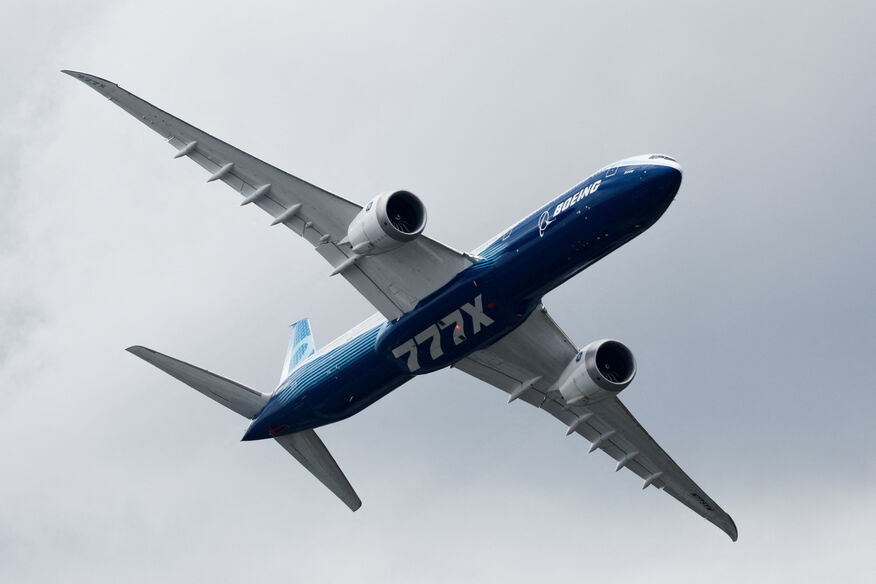[Reuters Breakingviews] US defense giants will be outflanked by trade war


By Gabriel Rubin
WASHINGTON, April 9 (Reuters Breakingviews) - Conflicts in the 20th century made U.S. defense companies the armorers to the world. The trade war waged by President Donald Trump threatens to diminish their status. Shock tariffs compound schisms with allies over Ukraine, Greenland and more. The global arms trade isn’t just about weapons; historically, it’s been a way to forge ties with the White House. The likes of Boeing BA.N and Lockheed Martin LMT.N will still matter, but as the value of those ties weakens, so will their edge.
Despite intermittent tensions over NATO allies’ longstanding target to spend 2% of GDP on defense, European partners’ loyalty to U.S. contractors has been a fillip to growth. Defense spending by the European Union rose to 227 billion euros in 2023 from 168 billion euros in 2019, including a 12% jump following the 2022 Russian invasion of Ukraine. The U.S. benefitted, as military equipment sales to foreign governments in 2024 surged 29% to $319 billion, outpacing negligible growth in the $884 billion Pentagon budget. Roughly two-thirds of EU procurement orders go to U.S. firms, according to a European Commission report, though the International Institute for Strategic Studies think tank pegs it at about one-third.
Whether the sum is large or very large, the Trump administration’s acrimonious rift with Ukrainian President Volodymyr Zelenskiy, along with threats to possess semi-autonomous Danish territory Greenland, sparked fierce backlash that puts it at risk. In March, the EU unveiled a plan to reinvigorate its defense sector, targeting 65% of purchases supported by a new 150 billion euro lending scheme to be made in Europe.
It is a clear statement of intent. Already, the pride of U.S. weaponry exports, Lockheed’s F-35 fighter, could be affected. Danish and Portuguese officials have expressed concerns over the craft, with France’s Dassault Aviation AM.PA angling to push it aside. Lockheed is the world’s largest defense contractor, judging by its $71 billion in 2024 revenue. Some 11% came from Europe, and mostly from planes.
Boeing’s F-15 and Lockheed’s F-16 could also be vulnerable, defense procurement experts say, if NATO allies switch to planes like the Saab Gripen, sales of which boosted its Swedish manufacturer’s 2024 organic sales growth by a stronger-than-expected 24%.
Still, Lockheed CFO Jay Malave boasts that the company’s order backlog remains extensive — a common sentiment among peers. The long legacy of NATO ensures crucial weapon interoperability, and the U.S. counts five of the world’s six largest defense contractors, a scale that is hard to challenge. Strong recent results at RTX reflect that indispensability in theaters like Ukraine. And the trade war does also offer some leverage on smaller economies. Trump’s top economist, Stephen Miran, said in a speech Monday that countries could show their commitment to "burden sharing" by spending more on U.S.-made weapons; Taiwan and Vietnam have suggested doing just that in recent days in bids to lower tariffs on their exports. These advantages will blunt the impact, but as allies reappraise their reliance on American power, U.S. defense behemoths’ once-indomitable moat will shrink.
Follow @Rubinations on X
CONTEXT NEWS
Defense officials in Canada, Denmark, and Portugal have called for a review of F-35 fighter jet purchases from the United States due to the US’s security and trade posture under the Trump administration.
The EU unveiled a plan on March 19 to lessen its security dependency on the United States by 2030, with a focus on buying more defense equipment in Europe. To qualify for new loans, EU countries would have to buy at least 65% of equipment from suppliers in the EU, Norway or Ukraine.
US defense primes feel a Trump chill





